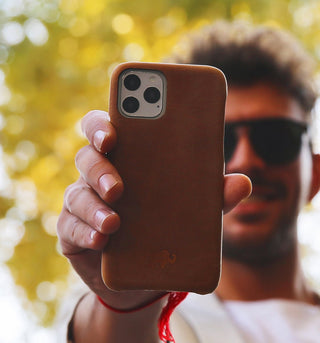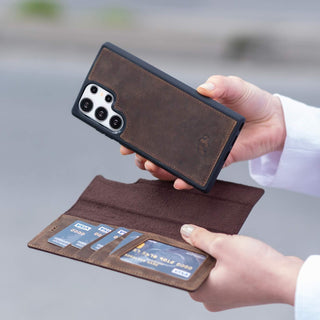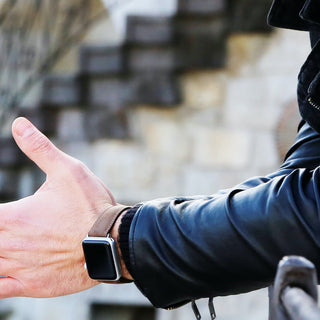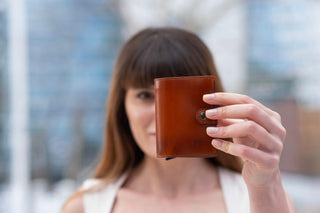
To an untrained eye, all leather products look the same. If you're only interested in real leather, this can be a serious issue.
See, the synthetic leather manufacturing industry has made great strides in recent years. Fakes are harder to detect, and there are far more of them. The price used to be the ultimate test, but the best faux leather comes at a premium as well.
The good news: there are still a few ways to make sure you're buying the real deal. Here's how you can recognize imitation leather in a few seconds.
1. Look Up Close
Real leather is a natural material, which gives it a rough texture. Take a closer look at the material and see if you can spot any imperfections or blemishes. These are solid indicators that you're dealing with real animal skin.
By comparison, machine-made pieces usually feature a uniform, regular pattern. This is because most manufacturers apply a faux grain pattern to a flexible surface. Fake leather will also have a smooth and unnaturally perfect texture.
2. Give It a Whiff
The old smell test is still a reliable way to check the authenticity of a product. Real leather has an organic, natural scent that you can't manufacture. If you've ever smelled genuine leather, you won't mistake that scent for anything else.
Faux leather can smell like anything, but most of these products emit a plastic scent. Any chemical odors are another surefire sign of synthetic materials. If the eye test is yielding uncertain results, a few sniffs should help you determine the truth.
3. Check the Label
This may seem obvious, but take a look at the label. If you're dealing with real leather, the label will always let you know about it. Look for phrases such as "100% real leather," "genuine leather," or "top grain leather."
If the label mentions "man-made material," it's synthetic. These products are usually made from polyvinyl chloride (PVC) or other synthetic polymers. If the label doesn't say anything about the material, consider it fake leather as well.
4. Test the Texture

As we established, real leather is as natural as you can get. When you run your fingers across genuine leather, it shouldn't feel smooth. If you press into the leather a bit, the surface should wrinkle and stretch, much like our skin.
If you apply this same test to fake leather, it will feel cold and even. Once you press your finger into it, the material will depress under it while retaining its shape. In other words, it won't act like skin, which is how you can tell it's fake.
More on Recognizing Real Leather
If you're looking for more clues about whether you're dealing with real leather, consider the price. Some faux leather can command a hefty price, but this never works the other way around. If you come upon a leather product that seems too good to be true, it probably is.
Interested in buying a luxury leather accessory for your phone? Looking for a brand new leather bag or wallet? Explore our site -- we're sure we have exactly what you're looking for!








